
Got Your
Plates,
Now What?
Last updated: 29.09.2023
Government of Western Australia
Department of Transport
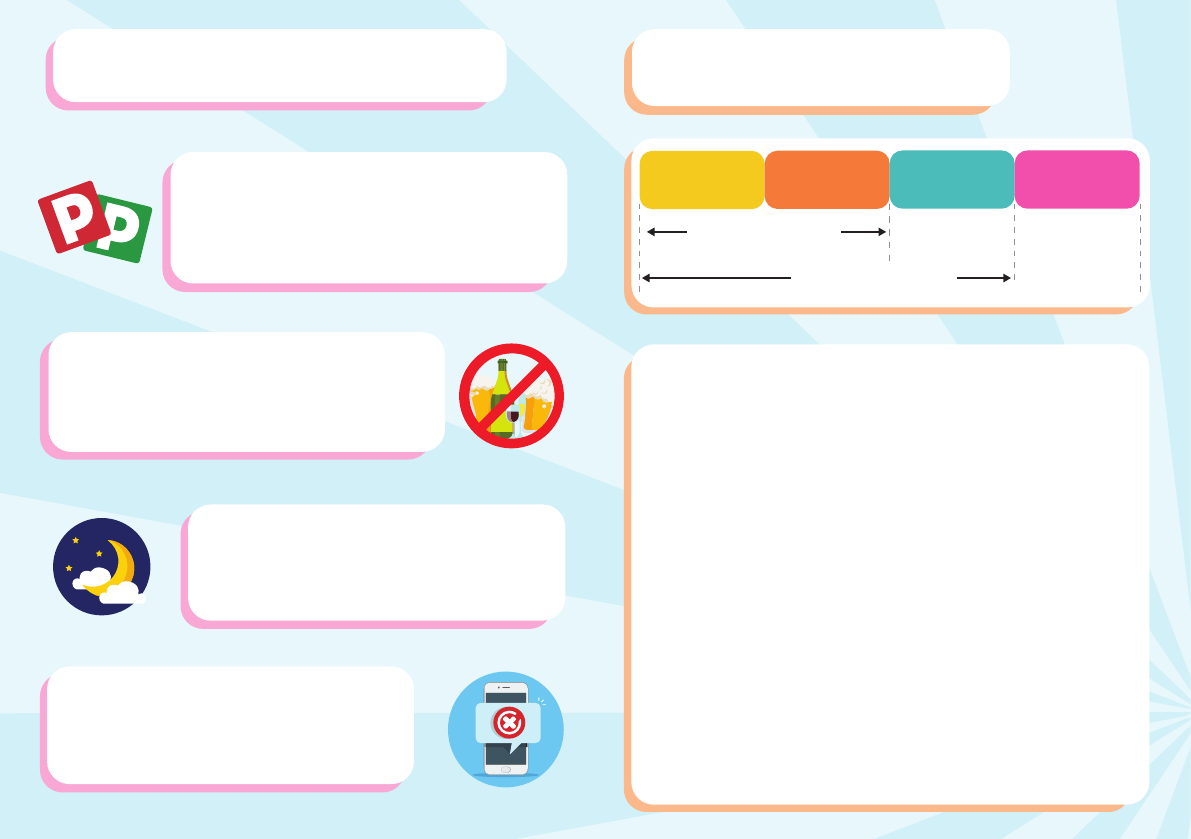
Demerit Points
Learner’s
Permit
First year
of licence
Second year
of licence
Ordinary
licence
4 Demerit Points
Novice Driver Type 1
8 Demerit Points
Novice Driver Type 2
There are penalties for trafc offences, including demerit points,
nes and loss of licence. You will be disqualied from driving
for three months and your licence may be cancelled or learner’s
permit suspended if:
• Novice Driver Type 1: 4 demerit points are recorded against
you when learning to drive on a learner’s permit or until the
end of the rst year of holding a provisional licence.
• Novice Driver Type 2: 8 demerit points recorded
against you until the end of the second year of holding
a provisional licence.
If you accrue 4 demerit points when learning to drive your
learner’s permit will be suspended for three months. You will be
disqualied for three months and your licence may be cancelled
if you accrue too many demerit points in the rst two years of
driving. If cancelled you will have to reapply for your licence
when the disqualication period has ended before driving.
If you accrue too many points, a demerit points notice must be
served to you before your disqualication can start.
You can check your demerit points by visiting the DoT website
www.transport.wa.gov.au
Rules for P platers
Display P plates
You must display red P plates for the rst six months
of your provisional licence and green P plates for the
remaining 18 months or until you turn 19 years of age,
which ever period is longer.
Zero Blood Alcohol Content (BAC)
A zero BAC applies to novice drivers. If you’re
convicted of a drink driving offence, you may have
to use an approved alcohol interlock to drive a car.
Night time driving restrictions
You cannot drive between midnight and ve am
for the rst six months of your provisional licence.
Exemptions may apply.
Mobile phones
You can only answer or call someone if the
phone is in a mount or can be used without
touching it when driving.
12 Demerit
Points
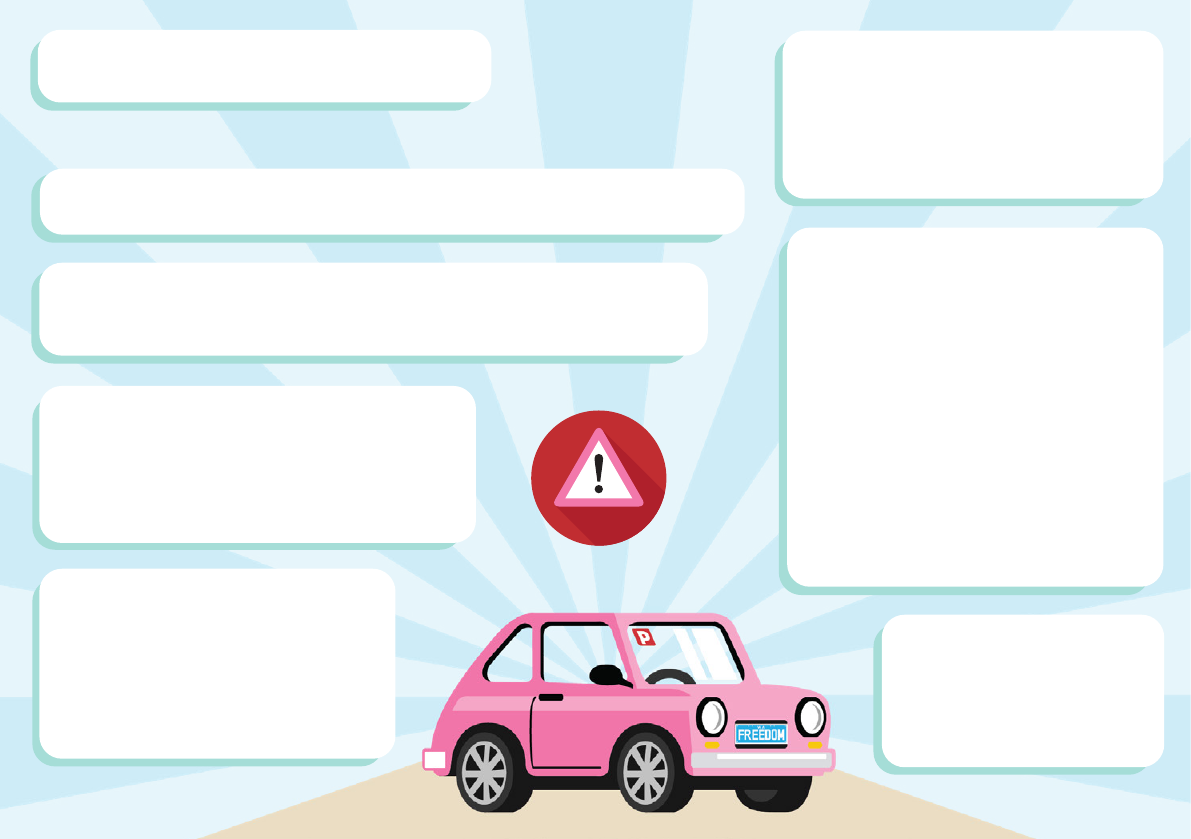
Risks while driving
Driving tired
Driving fatigued can slow your reactions. If you start
yawning, blinking more than usual, drift from your
lane or zone out, you need to pull over. Take a break
or switch drivers. Having a 20 minute power nap can
refresh you and prevent fatigue related accidents.
Seatbelts
Not wearing a seatbelt is an offence and can result in infringements and demerit points.
You are 10 times more likely to be killed in a crash if you’re not wearing a seatbelt.
Young drivers are over-represented in serious and fatal crashes with some studies suggesting
young drivers are 60% more likely to be involved in a serious crash than any other age group.
Drink and drug driving
Drinking alcohol or using illicit/prescription
drugs puts yourself and other road users at
risk. A zero Blood Alcohol Concentration (BAC)
applies to novice drivers. You are a novice driver
until you’ve held a licence for two years
(or periods adding up to two years).
Pay attention
Distraction puts everyone on the road at risk.
To be safe on the road you should:
• Not eat or drink while driving and
instead take a rest break.
• Set up everything before taking off
including mirrors, GPS, music etc.
• Ask passengers to be quiet if you can’t
concentrate on driving.
• Make sure pets are safe and properly
restrained.
• Clean windscreens and mirrors.
• Set your phone to silent.
Always keep your eyes on the road. A two
second distraction at 60 km/h means you’re
driving 33 metres blind.
Driving with friends
The more friends you have in the
car, the higher your risk of having
a crash. Ask passengers to be
quiet if you are having difculty
concentrating.
Careless Driving Offences
Provisional licence holders who are issued
with an infringement notice by a Police
Ofcer for careless driving (driving with
undue care) may have their driver’s licence
cancelled on payment of the ne.
They will be required to serve a mandatory
three month period of disqualication.
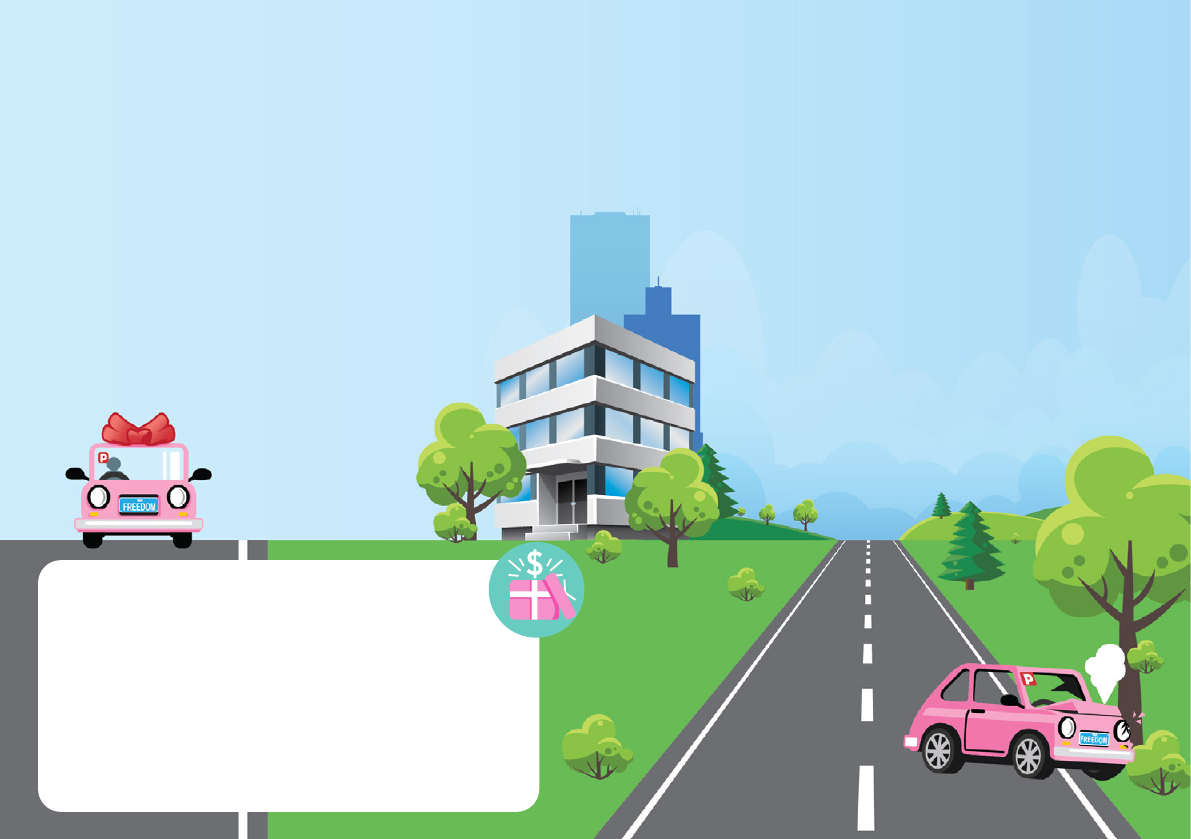
When you’re o your P’s
Want a years driver’s licence for free?
All you need to do is make sure you don’t commit a trac oence
during your Learner and Provisional periods and you’ll get a free
driver’s licence under the safe driver reward scheme.
Look out for the one-year free renewal option or ve-year option
which has been discounted to the price of four when you receive
your driver’s licence renewal notice.
To check the rules for eligibility, visit www.transport.wa.gov.au
What if I crash?
• Stop your car immediately and turn on your hazard lights.
• Check it’s safe to exit your car and then carefully approach
other cars that might be involved to see if anyone is hurt.
• Call 000 if help is needed. Stay at the scene of the crash
and wait until emergency services arrive.
Check if you need to report a crash to WA Police Force
online at www.police.wa.gov.au
• Collect as many details as you can from the other
parties involved and take down the details of any
witnesses in case they need to be contacted by
the Police or for insurance.
• Call Main Roads on 138 138 if you nd yourself
obstructing trafc on a Freeway or major metropolitan
road. Main Roads may help relocate you to a safer
location at no cost.
• Call the Wildcare Helpline on 9474 9055 if you
have hit and injured a native animal.
Your car can be the difference between survival or being killed
or seriously injured in a crash. When buying a car you should:
• Review independent safety ratings at www.ancap.com.au
• Look for a car which has the maximum 5 star Australasian
New Car Assessment Program (ANCAP) safety rating.
A Used Car Safety Ratings Guide can also be found online at:
www.wa.gov.au
What is an ANCAP safety rating?
ANCAP tests cars and awards them a safety rating between one and ve.
The test puts cars through crash scenarios to nd it’s level of safety for
drivers, passengers, and pedestrians as well as testing technology
in cars that can minimise the effects of a crash.
The higher the ANCAP rating, the safer the car.
Your first car
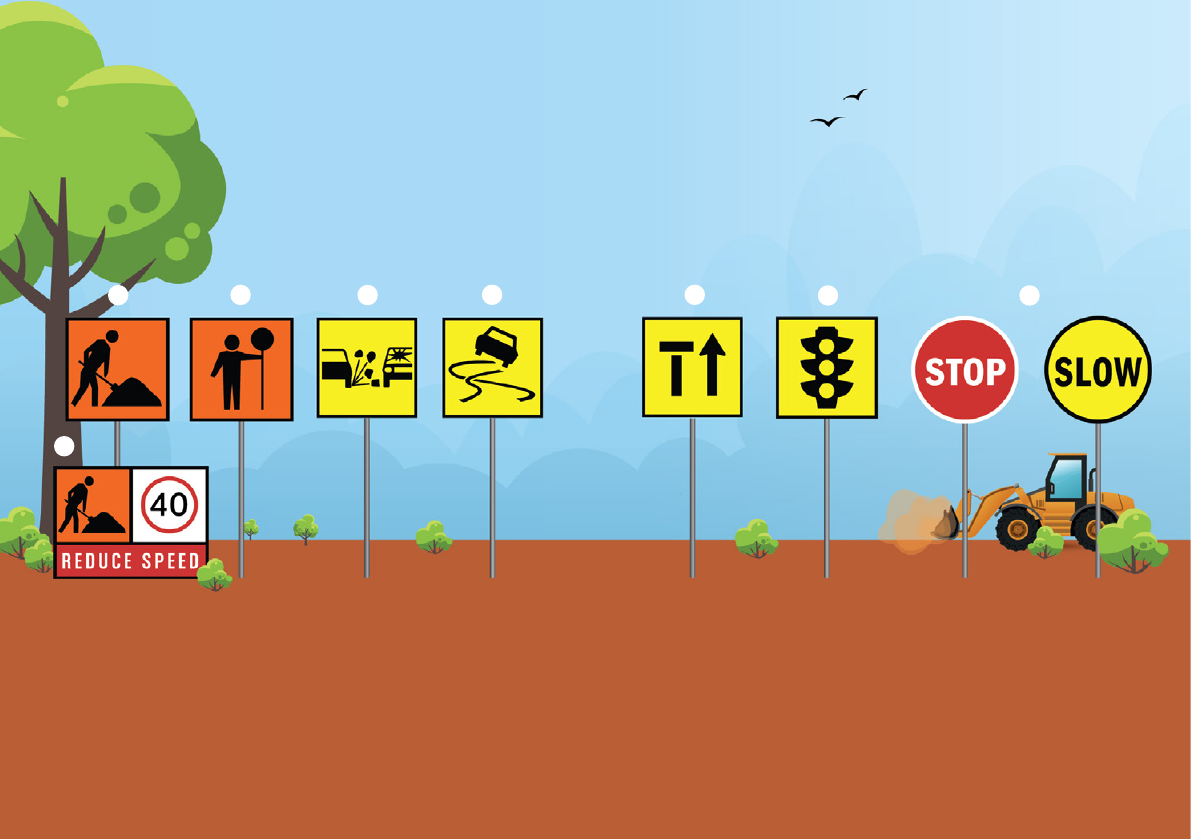
Road work signs
1. Multi-message sign. Road workers are on or next to the road and a
speed limit applies until the next speed limit sign. You must reduce
speed to on or below the speed limit shown on the sign.
2. Worker symbolic sign. Workers may be on or near the road.
Drive with care for your own and roadworkers’ safety.
3. Trafc controller symbolic sign. A trafc controller may direct you
to stop, you must follow their directions.
4. Loose Stones sign. Hazardous road surface conditions ahead.
Be careful and drive safely to the conditions.
5. Slippery road sign. Hazardous road surface conditions ahead.
Be careful and drive safely to the conditions.
6. Left lane closed ahead. The T symbol shows the closed lane and
the arrow shows the lane/s which remain open.
7. Temporary trafc signals. You must comply with these the same
as you would for other trafc signals.
8. Hand-held stop/slow sign. These are used by trafc controllers.
You must stop at a safe distance and wait when facing a STOP
sign. You can continue with caution when faced with a SLOW sign.
1
2
3
4
5
6
7
8
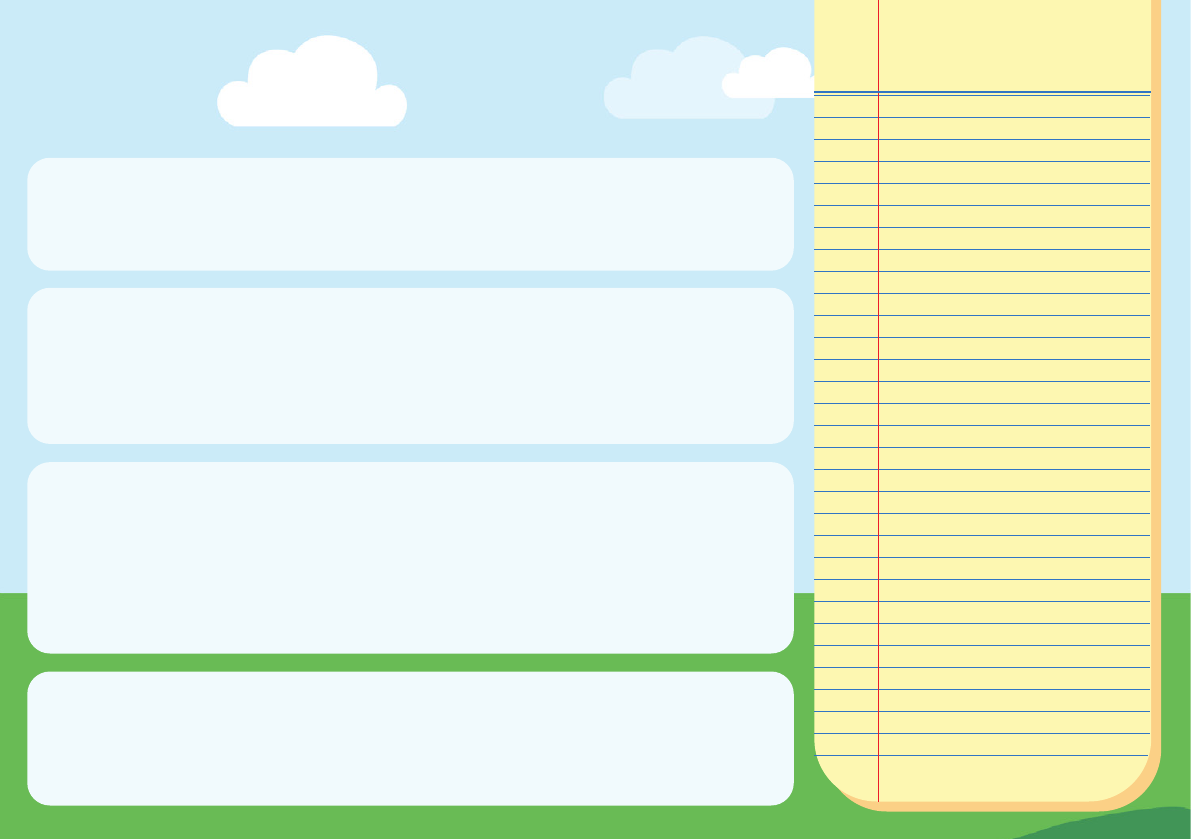
Driving on regional roads
Gravel and sand roads
You’ll nd many of the roads in regional areas of WA are gravel or sand roads. These road surfaces
can be uneven and slippery, so make sure you slow down around bends, and don’t brake suddenly
as it can cause your car to lose control.
Low visibility
Avoid driving during low visibility conditions such as smoke, fog or direct sunlight. Wait until the
conditions clear, such as waiting until after sunrise and sunset. If you have to continue driving, slow
down and drive to the conditions. Driving on sand and gravel roads can also cause low visibility by
dust and rocks being kicked up in the air.
Be aware of animals on the road
In regional areas of WA it is not uncommon for animals such as cattle, camels, emus and kangaroos
to cross or rest on the roads. They can be unpredictable, often approaching your car rather than
moving out of the way. Kangaroos are most active during sunrise and sunset especially during winter.
Look as far in front and to the side as you can while driving to make sure there aren’t any animals
approaching the road. Always slow down, only sound your horn if it is safe to do so, and go around
them slowly. Do not try and avoid them by swerving at speed, as this can cause you to lose control
of the car, or collide with another.
Overtaking
Overtaking lanes are about every 5 to 20 km on busy regional roads. Only overtake when it is safe
to do so and don’t exceed the speed limit. Road trains in WA are some of the largest trucks in the
world. You must be careful if overtaking. They can take a while to overtake and can pull your car in
towards them when passing. Do not overtake a road train if you are towing a caravan or trailer,
instead wait until you reach an overtaking lane.
Driving long distances
pre-travel checklist
When going on a long trip it’s
important to make sure you are
prepared. Towns and service
stations in regional WA can be up
to 200 km apart. Here are some of
the essential tips you will need:
Plan your journey around the
distance you are travelling.
General maintenance check on
your car (e.g. oil, water and tyres).
In case of emergancy have at least
ve litres of water per person per
day on hand.
Rest the night before a long trip.
Use a recent detailed map.
Be aware of road conditions.
Be aware of the weather
(heavy rainfall in certain areas
can cause ash ooding).
Keep track of how far you have
travelled.
Staying hydrated helps prevent
fatigue.
Take regular driving breaks.
Do not drive if you feel tired.
Take turns driving if travelling
with others.
Refuel at every service station
during your journey and bring
extra fuel with you on the trip.
